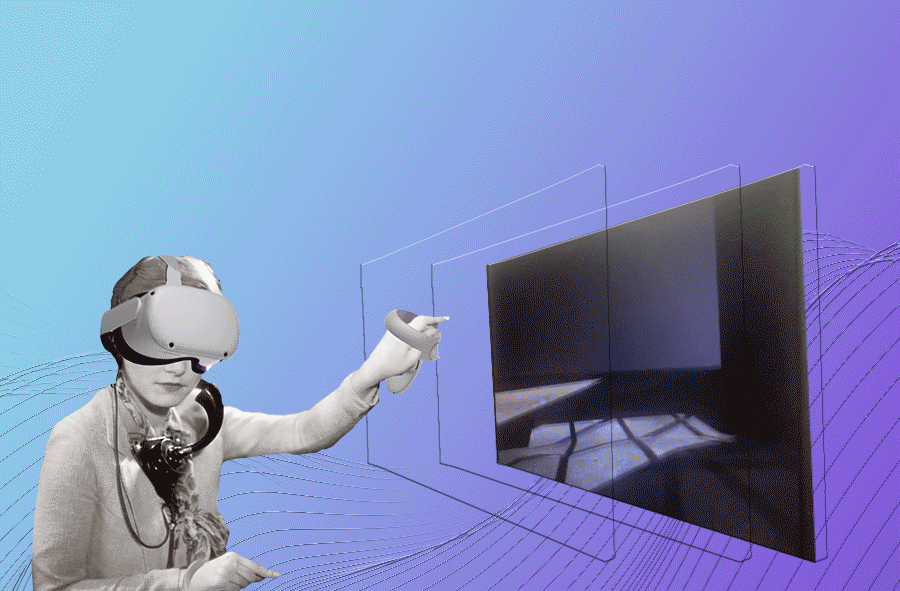
Feminanimate Objects
ROLE
UX DESIGNER
RESEARCHER
UNITY CODER
VIDEO EDITOR
SCRIPT WRITER
AUDIO PRODUCER
TEAM
EMMA VENDETTA REIMERS
CAROLINE COLQUHOUN
This virtual reality experience invites a consideration of the historiography and implications of female-personified technological infrastructures, both voiced and voiceless. In exploring gender in technology from nautical tradition to smartphone-embedded virtual assistants, my artistic collaborator Caroline Colquhoun and I investigated the ways in which the feminine is often seen and not heard or, conversely, heard and not seen.
By challenging the often overlooked gender bias programmed into our technologies, Feminanimate Objects asks that viewers reprogram themselves.
TIMELINE
3 WEEKS
YEAR
MAY 2019
Problem Space
Virtual assistants like Siri, Alexa, and others have been programmed to be female or feminized helpers. Having a woman on demand in your pocket via a smartphone is a problematic complication of gender relations and reinforces antifeminist histories of media related to computer and the phone, remediating those into new nightmarish possibilities in the digital age.
Project Goals
expand our VR tech skills
embrace the liminality that VR offers
ground our VR design in cutting edge theoretical work
deliver a 15-minute VR experience for public showing
Collaborators
Dr. Caroline Colquhoun
Caroline’s work focuses on modern resistance in Hispaniphone Africa through media arts. She pays close attention to migration, historical memory, gender, and transcultural Identities.
Dr. Emma Vendetta Reimers
My research centers adult learners interactions with sound and mixed media in order to increase empathy. I work on topics related to race, gender, equity, literacy, and place-making.
Research Question
How can we create an immersive media experience that puts the user in relationship with the past, present, and impending future voices of women and other feminized and disembodied beings?
Design Process
Borrowing from and expanding upon Chun's restructuring and Flaig's call to action, Feminanimate Objects seeks to explore the analytical and historical potential in examining gender and/as technology; looking at the entanglements and overlaps of the mediating system of gender with other mediating elements reveals gender to be “not simply an object of representation and portrayal, of knowledge or truth, but also a technique that one uses, even as one is used by it — a carefully crafted, historically inflected system of tools, mediation, or enframing that builds history and identity” (Chun 7).
Employing a theoretical and practical framework informed by Flaig and Chun, we drafted a 360 Google Poly tour. (This tour is now defunct as Google discontinued their Poly 360 platform in early 2021). We played around with the idea of having a series of Google Cardboard headsets at a museum space so that guests could take the experience with them. This companion to the final edition of Feminanimate Objects allowed us to ask questions about the gap between AR media and VR media. We felt the need for a more immersive experience, improved sophistication, and streamlined storytelling.
Toolbox:
Tracing the (abridged) history of Alexa and Siri’s ancestors, we examine the feminization of technological infrastructures and the objectification of the feminine and its implications in past, present, and future. In building our VR experience, we experienced many technical limitations, time constraints, and lots of bugs that needed to go or, in one case, evolved to become a feature.
We consulted with Dr. Ole Molvig, a VR expert and instructor, at Vanderbilt’s Wond’ry Lab as we troubleshooted.
+
+
Key updates to our previous iteration:
adaptation of circular narrative into 15-min timed experience
creation of videos to project within virtual space
development of virtual landscape
writing and recording of Siri scripts
coding (lighting, timed cues, interactivity) within Unity
1
Solidify theoretical approach.
2
Connect to other empirical research.
3
Build 1st AR iteration in Google Play.
4
Build 2nd iteration in Unity, consulting a VR expert.
PAUL FLAIG:
“Yesterday’s Hadaly: On Voicing a Feminist Media Archeology"
in Camera Obscura (2018)
problematizes the silencing and neutralizing of gender in the theoretical canon of media studies and media archaeology
proposes a feminist media archeology that “turns to future past by examining historical intersections of gender and media traversing antique, analog, and digital archives and imaginaries” (107).
WENDY HUI KYONG CHUN
in Camera Obscura (2009)
creates concept of race and/as technology
proposes that reframing race as technology allows for a deeper interrogation of discourses and practices
moving beyond ontological and essential questions of biological and cultural origins.
FINDINGS
UNCANNY
68% of users described the experience as uncanny in some way.
Of the 32 users who gave feedback on the project, a majority remarked on :
feeling “disembodied in the virtual space” (having no visible hands or feet)
feeling “sensitive to [one’s] body” in the physical plane (using VR for the first time, experiencing motion sickness, or feeling anxiety about what one’s body was doing that was visible to others in the VR lab while invisible to one’s self).
questioning the line between human and computer
considering “agency” and “who’s in charge”
being uncomfortable with hearing Siri’s voice without user prompting (11 participants)
For us, this experience for users marked success on the goals we set: we were able to link the form of mediation (VR) with the content of the mediation (a history told by disembodied women helpers) in a way that drove the narrative home for users.
INSTRUCTION-WORTHY
42% of instructors who visited asked to use Feminanimate Objects in their classrooms.
3 of the 7 instructors who visited our public showing of the VR project requested that Caroline and I bring it to their classrooms for students to experience.
For us, this indicated the impact and directness of our project. It rang true with stakeholders who spend ample time considering these same research questions and issues, then educating a top university about these same topics.
TIMELY
UNESCO released their report on the same topic the day before our showing.
We can’t take any credit for perfect timing, but we can celebrate it! The day before we had our public showing of Feminanimate Objects, our saved Google Scholar alerts let us know that UNESCO had released a report, I’d Blush If I Could, on the topic of gender equity issues and digital helper technologies. By the time users visited our exhibit, many had seen the news of this report on their news apps, meaning they were ideally primed to consider the importance of our topic.

PREVIEW
TRY IT OUT
Feminanimate Objects lives in the VR lab at the Digital Humanities Center at Vanderbilt University in Nashville, TN, USA.
This 1 minute trailer orients participants to the project.



















